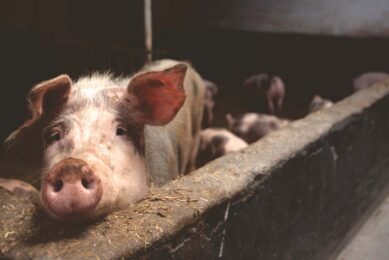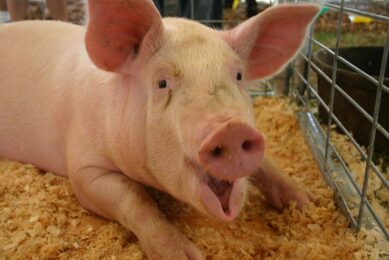North American news round-up: US pork production declines, exports increase

2022 ended well for US pork exports, with those in November the largest of 2022 in both volume and value, according to data released by US Department of Agriculture and compiled by US Meat Export Federation (USMEF).
“Pork exports reached 245,663 metric tons (mt) in November, up 3% from a year ago, while export value climbed 10%,” states the USMEF. “In both volume and value, exports were the highest since May 2021. For January through November, pork exports were 10% below the previous year at 2.43 million mt (down 7%).”
US pork exports to Mexico and China
US pork exports to Mexico set a value record in November, topping € 184 million for the second consecutive month. The volume was unprecedented at 87,809 mt.
All this is partly due to excellent growth in demand for variety meat products (mostly in Mexico but also in China), which were up more than 25% year-over-year at just over 50,000 mt.
USMEF President and CEO Dan Halstrom says the recent suspension of import duties in Mexico has meant more competition for US pork but marketing efforts about quality and value have paid off.
Industry consultant Dennis Smith recently reported added recently that “excellent demand” for ham, mostly from Mexico, has resulted in steady historically-elevated prices of that product.
Smith believes that as the pandemic eases in China, demand for US pork will be strong.
Record-shattering exports to Dominican Republic
US pork export demand will also be strong this year in the Dominican Republic (DR) and the Philippines. African Swine Fever recently decimated this.
The USMEF reports that exports to the DR had already set annual records through October 2022, and demand further intensified in November. Shipments reached a record 10,229 mt in November, up 70% from a year ago and up notably from the previous high of 8,966 mt in April.
“Similar to Mexico, the DR temporarily suspended import duties on red meat and poultry in June, heightening competition in the market, but the decree suspending these duties recently expired, meaning the US is once again the only major pork supplier with duty-free access,” states the USMEF.
“Imports from other major suppliers are subject to the DR’s most-favored-nation rate of 25%. Canadian pork exports to the DR fell back to zero in November after gaining some momentum when duties were suspended.”
Domestic scene – both positive and worrying
Smith predicts that 2023 will be a strong year for demand of US pork at home. Whilst a recession is expected in the next year or so, the US economy remains strong with historically-low unemployment rates.
Another factor driving current pork demand is the large decline recently in US beef production and a parallel increase in beef prices. Pork production in the US has also contracted, but only a small amount.
Smith puts the blame on issues such as very high feed costs, disease issues (porcine reproductive and respiratory syndrome and porcine epidemic diarrhea) in various states like South Dakota, rising interest rates, high facility construction costs and replacement costs. He adds that some industry consolidation occurring in the industry, which worries him.
He recently reported in National Hog Farmer that several packers are buying out large independent producers and believes “it’s rather alarming that these large independent producers are willing to simply exit the business. I’m expecting this trend to continue in 2023. Simply put, until or unless elevated corn prices decline substantially, one should not expect any kind of expansion in hog breeding numbers on the horizon.”
Canadian leadership change
The reins of leadership at the Canadian Pork Council (CPC) have just been passed on. A new board chair, René Roy of Quebec replaces Rick Bergman as chair. Bergmann was the organization’s longest-serving chair in CPC history, for 8 years.
Roy has a PhD in Agricultural Economics. He is the CEO of Ferme Alliance 7 and the Co-Chair (industry) at Canada’s National Farmed Animal Health and Welfare Council. The new vice-chair is Scott Peters of Manitoba.
The CPC will continue to focus on potential response and recovery plan should an African swine fever outbreak occur in Canada, and the board will also create a new strategic plan this year.
Join 18,000+ subscribers
Subscribe to our newsletter to stay updated about all the need-to-know content in the pigsector, three times a week. Beheer
Beheer










 WP Admin
WP Admin  Bewerk bericht
Bewerk bericht